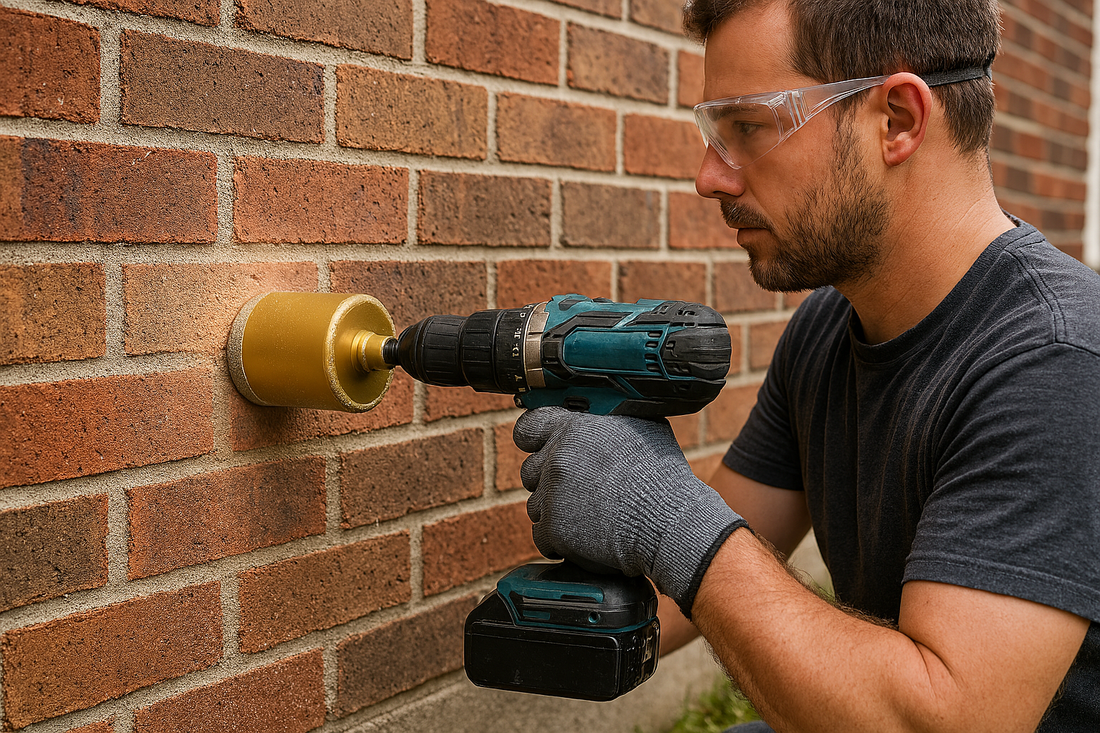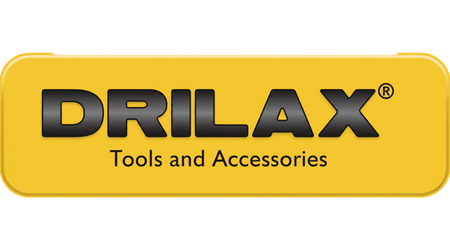
How to Drill Through Concrete and Brick Walls for HVAC, Plumbing, and Vents
Share
When it comes to installing new plumbing, HVAC systems, or vents, one of the biggest challenges is cleanly and efficiently drilling through tough masonry and concrete walls. A standard drill bit won't cut it. To get the job done right, you need the right tools designed for the job.
This guide will show you how to choose and use the appropriate Drilax diamond hole saws to make precise, professional-quality holes in brick and concrete, whether you’re a seasoned contractor or a dedicated DIYer.
Why Use a Diamond Hole Saw?
Unlike traditional hammer drills or rotary bits that chip away at the material, a diamond hole saw uses a continuous abrasive rim to grind through the surface. This method creates a perfectly round, smooth-walled hole with minimal chipping and cracking, which is essential for a clean installation and a professional finish.
1. For Standard Drills: The Drilax Gold Series
If you are using a standard corded or cordless drill, our Drilax Gold Series diamond hole saws are the perfect choice for most masonry applications. These versatile saws are ideal for brick, cinder block, and standard concrete, making them a must-have for a variety of home improvement projects.
Best for: Small to medium-sized holes for vent pipes, plumbing, and electrical conduits.
How to Use:
-
Attach to a Standard Drill: The Gold Series has a standard shank that fits directly into the chuck of your drill.
-
Start with a Guide: For accurate placement, use a drill guide or create a small pilot hole to prevent the saw from wandering at the start.
-
Wet Drilling is Key: Always use water to lubricate the saw. This keeps the tool cool, prevents dust, and significantly extends the life of the diamond abrasive.
-
Maintain Steady Pressure: Apply gentle, steady pressure and let the diamonds do the work. Avoid pushing too hard, as this can overheat the tool and cause premature wear.
2. For Angle Grinders: The Drilax Pro Series
For heavy-duty, commercial-grade drilling in concrete and reinforced masonry, our Drilax Pro Series is designed to be used with a 5/8"-11 angle grinder. This combination provides a powerful, fast, and efficient method for cutting large-diameter holes.
Best for: Large-diameter holes for HVAC ducts, dryer vents, and professional plumbing installations.
How to Use:
-
Secure to Angle Grinder: The Pro Series features a 5/8"-11 thread that screws directly onto the spindle of your angle grinder.
-
Dry Drilling: The Pro Series is designed for dry use with an angle grinder, as the high RPM and fan-like action cool the bit.
-
Use a Sweeping Motion: Start the cut by rocking the saw back and forth, allowing it to bite into the surface. Once a groove is established, apply even pressure.
-
Watch for Dust: The drilling process will create a significant amount of dust. Use proper personal protective equipment (PPE) and consider a dust collection system.
3. For SDS Drills: Specialized Tools for Maximum Power
For those with an SDS drill, we offer specialized diamond core bits and adapters. SDS (Slotted Drive System) drills provide a hammer action that works exceptionally well with our core bits, making them a powerhouse for drilling into even the toughest concrete.
Best for: Heavy-duty applications, reinforced concrete, and jobs that require maximum power.
How to Use:
-
Use an Adapter: An SDS adapter allows you to use our core bits with your drill.
-
Engage Hammer Mode: The hammer function on an SDS drill is crucial for breaking through the tough aggregate in concrete.
-
Use Water: While the hammering action is powerful, water lubrication is still highly recommended to cool the diamond segments and prolong the life of the bit.
By choosing the right tool for your specific application and drill type, you can make quick and clean work of drilling through concrete and brick walls.
